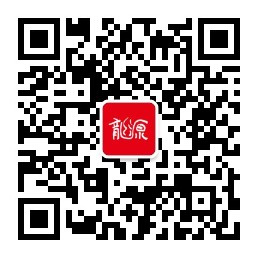- 收藏
- 加入书签
An Intertextual Reading of The Zoo Story
Abstract:Intertextuality is the intertextual relations of texts. Of the present thesis, the first part is devoted to the reasons why The Zoo Story is chosen to be explored as a case of intertextuality. The second is the outline of the development of intertextuality. In the third part, The Zoo Story is compared to its intertext The Hairy Ape. In the fourth part, illustrations are made to show the development made by The Zoo Story in some aspects on the basis of The Hairy Ape.
Key Words: Intertextuality;The Zoo Story;The Hairy Ape
1. Introduction
After reading The Zoo Story, it is quite easy to find that the themes, the images it chose, and the ending of the play partially echo with those in The Hairy Ape. Also, as a forerunner of modern American theatre, Eugene O'Neill exerted a profound influence on the latecomers, Edward Ablee is no exception. That’s why the present thesis tries to explore The Zoo Story as a case of intertextuality and picks The Hairy Ape from numberless intertexts of The Zoo Story to have an intertextual reading of it.
2. The Theory of Intertextuality
The late 1960s is a time of theory for Paris. In 1966, the term “intertextuality” was coined and was for the first time introduced by French theorist Kristeva in the following words in the journal Tel Quel: “ The text is productivity, meaning that (1) its relation to the language in which it is sited is redistrubutive (destructive-constructive) and consequently it can be approached by means of logical categories other than purely linguistic ones; (2) it is a permutation of texts, an intertextuality: in the space of a text, many utterances taken from other texts intersect with one other and neutralize one another”.
Intertextuality is a popular term of literary criticism. Both Kristeva and Barthes separate intertextuality from influence. They replace the concept of an author that “fathers” a text with the concept of intertextuality, a mosaic or an impersonal blending or intersecting of various texts. They distinguish intertextuality from traditional notion of influence, in which the meaning of a text is traced back to the author’s intention.
3. Intertextuality in The Zoo Story with The Hairy Ape as an Intertext
Theme--- the existentialist quests
Although these two plays belong to distinct dramatic schools, they all embody the philosophy of existentialism and express the same theme, that is the alienation and loneliness of modern people under modern material civilization. Two writers both revealed the living conditions of Americans in the capitalist society and made explorations and experiments on human being’s survival state and meaning of existence in the modern civilization.
Images--- “ape” or “zoo”
Both Yank’s appearance and his thoughts, as well as the environment in which he lives, highlight the natural nature of Yank and the vast majority of lower-level workers, that is animality. Poor living environment makes Yank is exactly like ape in appearance. Jerry repeatedly asked Peter if he knew what was going on in the zoo and told his story.
Minor Characters--- Paddy and Peter
Paddy, another laborer in The Hairy Ape, could not agree with his mechanical existence, either. He represents another group of people who are aware of the crux of the reality and conscious of alienation and solitude of their own existence. Peter in The Zoo Story is closed in his own existence, does not care about others, does not want to communicate with the outside world. Jerry's narration has aroused his inner sympathy.
4. Meaning of The Zoo Story withThe Hairy Ape as an Intertext
Thirty-six years after the birth of The Hairy Ape, thirty-year-old Edward Albee wrote The Zoo Story. The latter certainly bears influence from O'Neill drama. However, compared with The Hairy Ape , in The Zoo Story , the rational thinking and questioning about the meaning of existence have long been buried in the absurd essence of reality. Albee's exploration of existence has focused more on the loneliness and anxiety and desperation experienced by modern people in the absurd reality.
As an important writer of American theater of absurd, Albee thinks that the Absurd Theater is a realist drama that really shows the status quo of mankind. This is in which the humanistic value of absurd literature lies:the crisis of modern human existence is reproduced in the form of absurdity and exaggeration so as to make people face the real existing situation and relieve their anxiety and gain self-esteem in laughter.
5. Conclusion
The Zoo Story draws on The Hairy Ape in such aspects as themes, images and the protagonists as well as the minor characters, since they are inter-referential intertexts, readers bring to mind the elements of The Zoo Story when they read The Hairy Ape and vise versa.
Reference:
[1]Allen G. Intertextuality. London: Routledge, 2000.
[2]Kristeva J. Word, Dialogue and Novel. In: Roudiez L S, ed. Desire in Language. New York: Columbia University Press, 1980:66-80.
[3]Orr M. Intertextuality: debates and contexts. Cambridge: Policy Press in association with Blackwell Publishing Ltd, 2003.
[4]Reuben,Paul P. "Chapter 8: Edward Albee.",Perspectives in American Literature- A Research and Reference Guide, Retrieved June 28, 2007.
[5]聂珍刊. 序言:文学伦理学批评[A]. “文学伦理学批评:文学研究方法新探讨”学术研讨论文集[C]. 武汉:华中师范大学出版社,2005.
作者简介:穆红霞,1994年10月27日出生,女,汉族,现就读于陕西师范大学外国语学院2017级外国语言学及应用语言学专业,主要研究方向:理论语言学。






 京公网安备 11011302003690号
京公网安备 11011302003690号


